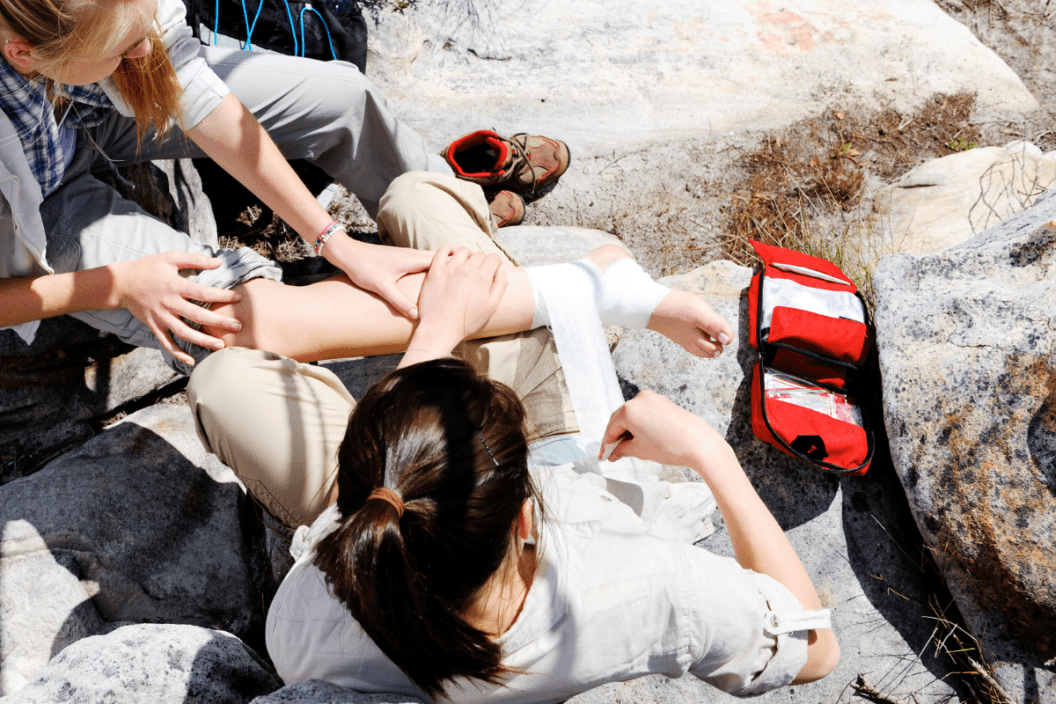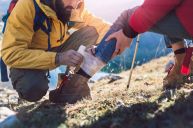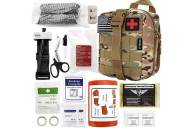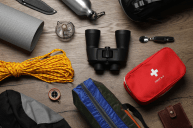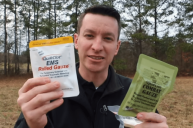Whether you hit the trails with your family members, friends, your pup, or alone, it's always worth being prepared before you head out into the wilderness. And that includes keeping basic first aid kit supplies on hand in case you or someone you're with gets injured.
My own travel-friendly first aid kit recently came in handy when Rosie, my energetic German Shepherd mix, was racing around a meadow when she suddenly ran back to me with blood coming from both front paws. I'm still unsure what happened, but Rosie lacerated the bottoms of both front feet. While my partner called the emergency veterinarian, I was able easily access my sizable first aid kit, grab gauze and Ace wrap, and bandage her feet. This put pressure on her wounds and kept additional dirt out of her cuts until she was able to get stitches.
READ MORE: The 5 Best First Aid Kits for Every Scenario
Your hiking first aid kit should be a comprehensive, well-stocked medical resource. Because if things go south, a plastic bag with old Band-Aids (that's what I like to call a boo-boo kit) probably isn't going to cut it. My strategy: Keep a smaller go-bag (I use a fanny pack) alongside my larger first-aid kit take with me before I head out into the woods or far away from my car. Things I stick into my go-bag include aspirin, a roll of gauze, one Ace bandage, a few Band-Aids, Neosporin, a small container of QuikClot, an emergency blanket, medical shears, and a tourniquet. I also bring my Garmin InReach. This way, I cut down on weight in my pack while having at least one of everything.
For anyone spending time outside, these are the first aid kit supplies you should be sure to include in your pack.
1. Gauze, Ace Wrap, Medical Tape, and Adhesive Bandages
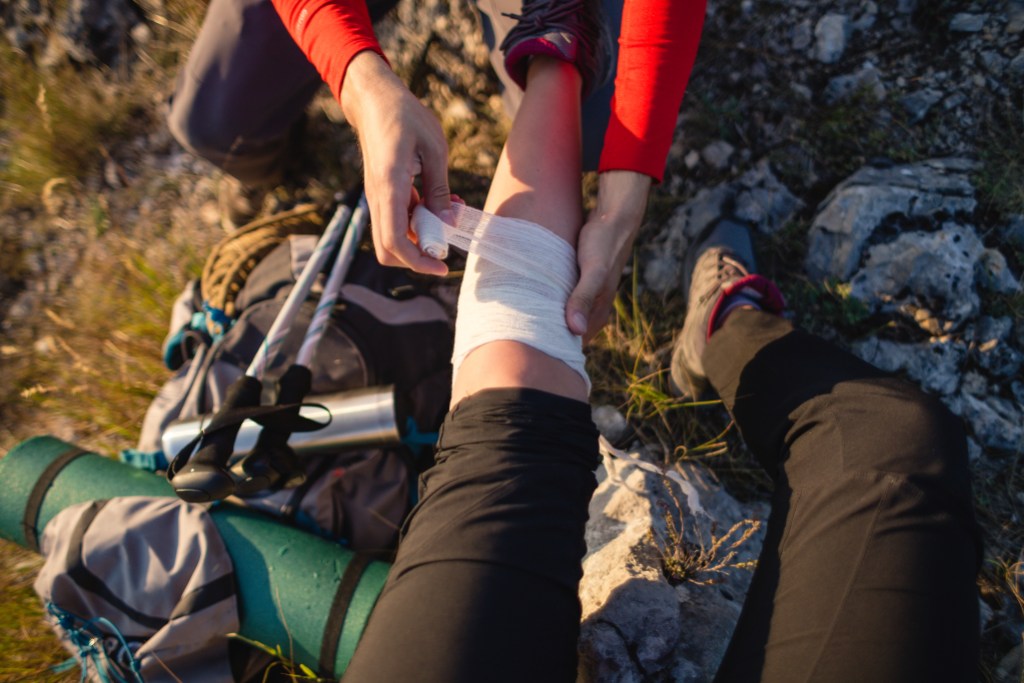
Getty
These items are arguably the most common products found in first aid kits. Bandages — ranging from a variety pack of Band-Aids, squares of nonstick gauze, rolls of gauze, medical adhesive tape, waterproof bandages, and self-adhering Ace bandage wrap — are essentials. When you keep these items on you, you're prepared to slow bleeding and protect cuts, scrapes, and gashes until you can get to a safe place.
2. Pain Relievers, Allergy Meds, and Medications
Pain relievers like acetaminophen, ibuprofen, naproxen, and aspirin are all great things to keep in your first aid kit. If you have allergies like me, keep some allergy meds with antihistamines in your first aid kit as well. Pack an EpiPen or inhaler if you need one or if you want to have one in case someone else does. Extra medications are also good to include in your kit; if you get stuck out in the woods, you'll be thankful you brought them along.
3. Antibiotic Ointments and Disinfectants
Antiseptic wipes or topical ointments like Neosporin are wise to carry. Whether your blister pops, you experience a burn, or you get a small cut, ointment helps expedite the healing process. It also kills any harmful bacteria that may have gotten into your wound. Disinfectants serve a similar purpose. This includes things like Bactine, hand sanitizer, or rubbing alcohol. These products kill germs, have antiseptic properties, and help clean your wound. Bactine includes Lidocaine, so you'll experience pain relief in addition to the cleaning benefits.
4. Cleaning Supplies
Cleaning supplies help clean your wound and medical gear. I keep cotton balls, alcohol swabs, and sterile gloves in my first aid kit to clean my shears, scissors, thermometer, and other supplies as well as for cleaning skin. Cotton balls can help clean cuts and scrapes as well as dab wounds. Gloves can also help keep germs out of injuries and help protect yourself against others' bodily fluids.
5. Scissors and Medical Shears
Tweezers and a small pair of scissors are helpful additions to any first aid kit. My scissors help me quickly cut gauze rolls, Ace wrap, medical tape, and more. (If you get blood or other fluids on these scissors, you can clean them with alcohol wipes.) Medical shears are a little different than scissors. They are much sharper and meant to cut through clothing or other thick layers. For example, if you get a large gash on your thigh while wearing jeans, it may be too painful for you to remove your pants. Having medical shears handy allows you to cut through the fabric to get to your wound. This saves time when seconds count.
6. QuikClot
QuikClot is a handy tool to have on hand. QuikClot is a hemostatic agent that promotes blood clotting, so you lose less blood and protect your wound faster. You can get it as a powder or as a bandage wrap with QuikClot.
7. Emergency Blanket
This small item is lightweight and great for stabilizing your body temperature. Emergency or space blankets reduce your body's heat loss (they help retain up to 90 percent of your body heat) and can also help keep you dry. If you're prone to getting cold, in addition to a space blanket, you might consider keeping extra hand warmers in your first aid kit. They can make you more comfortable if you're freezing, experiencing a lack of sensitivity in your extremities, or fighting hypothermia.
8. Tourniquets
Tourniquets are a must-have for any first aid kit owner. Tourniquets halt blood flow, and they cut off circulation to an injury by being tightly placed above an area experiencing blood loss. This device can and has saved lives. It's worth it to keep two of these in your kit. On the off chance that one device fails, you can always use the other. In extreme cases, you may need two tourniquets to sufficiently cut off circulation to prevent losing too much blood.Of course, it's also essential to know how to use one properly — the American Red Cross offers training on its website.
9. Emergency Radios
Although radios aren't medical devices, they can come in handy in an emergency. For example, if you're out hiking with three people and you experience a life-threatening wound, one person can take a radio and head for help. The other radio can stay with you and the person watching over you, enabling communication with the third person who sought help. Having radios is especially important in areas with weak or no phone signal. My go-to backcountry radio brand is Rocky Talkie.
Things to Have Beyond First Aid Supplies
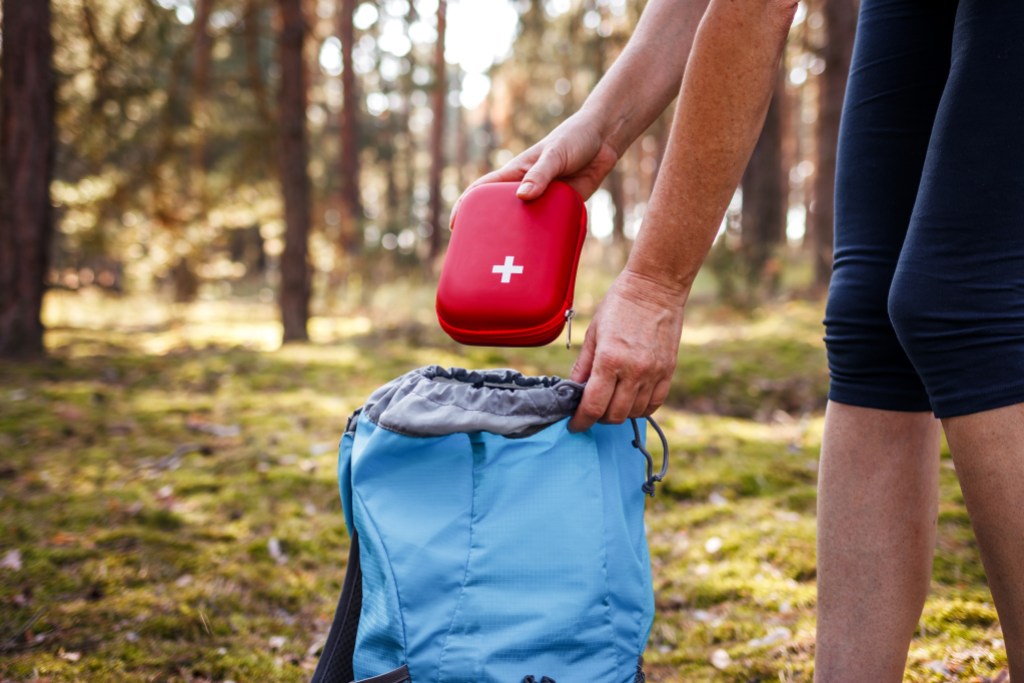
Getty
In addition to these first aid kit supplies, you should know how to use everything inside it safely. Online training offered by organizations like the Red Cross teaches you how to use tourniquets, apply CPR, get a first aid certification, and more. Having a knowledge-based toolkit, in addition to access to medical supplies, can save lives.
Things like thermometers, ear and eye protection, Garmin InReach products, and satellite phones are also valuable items you may want to include in your kit or as part of your overall outdoor gear.
All these items need a place to be stored, and several inexpensive fanny packs or other simple-to-carry bags. If you don't want to build your own first aid kit, there are many options online for purchasing a pre-built kit.
Being responsible for your and others' health and wellness in the backcountry is empowering. Taking ownership of your medical resources and outdoor skillset could mean the difference between life and death.
